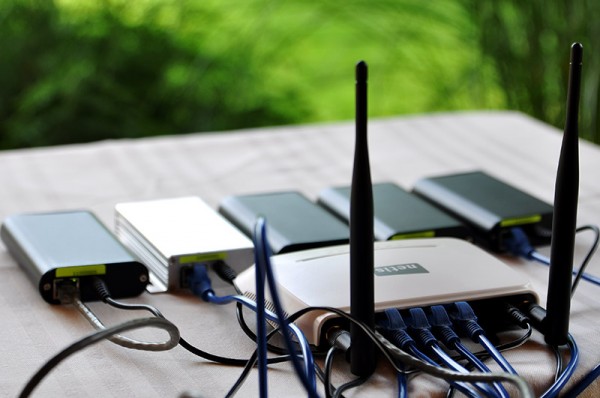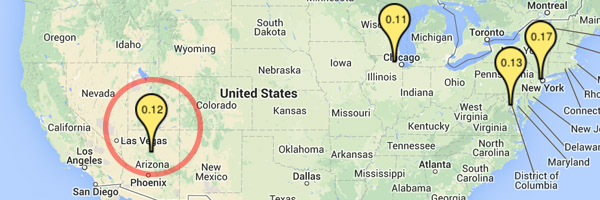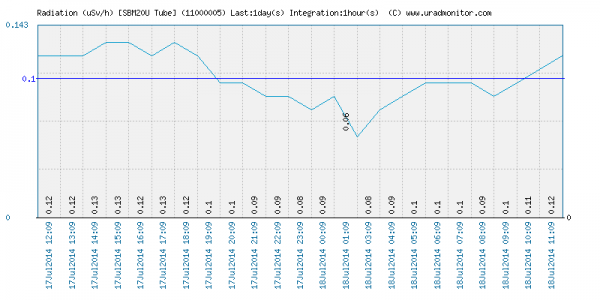-
The rubber gaskets
08/04/2014 at 07:39 • 0 commentsAs the uRADMonitor Model A is intended as a environmental radiation surveillance tool, that should be run outdoors, we’ve designed rubber gaskets for the aluminium enclosures, to make sure rain will not get in to damage the components.
![autocad_rubber_gaskets_uradmonitor]()
Now finally we saw the first components getting out of their factories and wanted to share with all of you. Here are the first rubber gaskets tested. They fit perfectly, offering protection level up to IP65.![rubber-gasket-results-small]()
The company in charge of manufacturing the cases and the rubber gaskets is the Shenzen Superbat Electronics Limited, checkout their portfolio for some great products. We’ve been impressed by their professionalism and their will to help us. Great guys!
-
Unit in Netherlands up and running
08/03/2014 at 21:53 • 0 comments![14_08_03_header]() A new unit went online, in a location close to Amsterdam. The new detector is the first in Netherlands, covering more ground as the network expands. The current measurements show a low background radiation level, only 0.09uSv/h.
A new unit went online, in a location close to Amsterdam. The new detector is the first in Netherlands, covering more ground as the network expands. The current measurements show a low background radiation level, only 0.09uSv/h.Here are the initial measurements, performed in Timisoara, Romania, before sending the unit:
![12000004_initial_cpm]()
And here is the same unit 12000004, running at its destination in Netherlands:![12000004_final_cpm]()
Real time data can be accessed here.
-
Production line for uRADMonitor detectors
08/02/2014 at 15:10 • 0 commentsMoving from manually built prototypes to an industrial production line, is a huge step especially for a project in an incipient phase, like uRADMonitor. Yet, with strong determination, obstacles melt away, opening the path for the first civilian environmental surveillance network, available to everyone, at anytime, to offer real time data on radiation level trends all around the Globe.
![14_08_02_header]()
One of the important characteristics is the detectors use the same tubes, checked against a common reference. So the numbers resulting from all the measurements you see on the world map, can be compared to others in the network. The levels measured in CPMs get to have a good meaning, but also the absorbed dose approximation, that can be compared to indications of other units commercially available. But more on this later.To read more on the project status access this link: Producing the uRADMonitor – the aluminium enclosure
Remember to support the project by voting its entry in the Hackaday.io competition or by visiting its FB page.
-
New unit in Massachusetts, USA
07/31/2014 at 22:04 • 0 commentsMost of you here are probably already aware of the network of autonomous low power radiation monitors, uRADMonitor. Besides these attributes, the units are small, low weighted, running on a direct Internet connection, so you don't need a computer to upload data.
Also one of the important characteristics is the detectors use the same tubes, checked against a common reference. So the numbers resulting from all the measurements you see on the world map, can be compared to others in the network. The CPMs get to have a good meaning, but also the absorbed dose approximation, that can be compared to indications of other units commercially available.
![14_07_31_header]()
The uRADMonitor network is constantly expanding and a new unit went online in Massachusetts.
Here are the initial and the current values registered by this unit:
![12000006_initial]()
![12000006_ma_values]()
And the nice constant voltage on tube:
For those interested in getting a unit, there's one currently listed on Ebay for a very low price, or you can get a unit here. Your interest and support for this project is highly appreciated, after all this is an ongoing effort resulting in the first global civilian radiation surveillance network, an accomplishment for the benefit of us all.You can also show your support by spreading the work (here's the facebook page), or by voting (hit the skull icon) the uRADMonitor entry on the hackaday.io contest. -
First unit in Japan measures low background radioactivity
07/29/2014 at 14:52 • 0 comments![14_07_29_header_japan]()
First unit in Japan measures low background radioactivity
The unit shipped to Japan finally went online yesterday. For now it is connected indoors. The unit measured an average of 0.12uSv/h in Timisoara, Romania during a few hours of tests.
![12000001_japan_public-usvh]()
Surprisingly the values dropped to 0.07uSv/h when the first measurements started at its current location, in Japan. The first half of the graph shows recordings from June, during its initial tests, while the second half contains the measurements from July, recorded in Japan.Here are the values in CPM, as recorded by the SI-29BG Geiger tube contained in this detector, illustrating the same decreasing trend:
![12000001_japan_cpm]()
The integration was set to one hour, meaning that for each number plotted on the X axis, 60 distinct measurements recorded 1 minute apart were averaged to give a better indication on the real values. The unit’s other parameters indicates everything is functioning in normal parameters. Here is a chart showing the voltage on the Geiger tube, following a constant level of the preconfigured 380V:
![12000001-voltage]()
And here is the internal temperature:
![12000001_internal_temperature]()
The real time data is available here. For those of you interested in getting one of these units to monitor the radiation levels in your area, remember there is one currently available on Ebay for a very low price, to cover just the materials used: http://www.ebay.com/itm/131253996906
-
Surplus unit on Ebay
07/27/2014 at 23:10 • 0 commentsI've recently sent a new batch of uRADMonitor units throughout the World, but got one unit left. I've listed it on Ebay for its BOM price: http://www.ebay.com/itm/131253996906
![]()
Anyone willing to get an automated radiation detector for the minimum possible cost, and join the network, has now a chance. You also get to directly support this project.
-
Rainproof plastic enclosure
07/24/2014 at 22:00 • 0 comments -
New Zealand detector up and running
07/19/2014 at 11:33 • 0 comments
uRADMonitor unit 11000007, got to its final destination, after a long journey. The unit is now up and running from New Zealand.![14_07_18_header_new_zealand]()
Live data on the web portal as usual: http://www.uradmonitor.com
-
Wireless (WiFi) connectivity!
07/18/2014 at 20:37 • 0 comments![14_07_18_header_wireless]() Due to popular demand, but also because wireless is better than installing wires, especially for some remote locations (and that’s where we usually need uRADMonitor installed), here’s a quick guide on connecting the uRADMonitor model A to the wireless network. Yes, uRADMonitor can be connected wirelessly to your home WLAN with the method presented in this guide.
Due to popular demand, but also because wireless is better than installing wires, especially for some remote locations (and that’s where we usually need uRADMonitor installed), here’s a quick guide on connecting the uRADMonitor model A to the wireless network. Yes, uRADMonitor can be connected wirelessly to your home WLAN with the method presented in this guide.Before continuing with this guide, make sure you read:
Quick details on uRADMonitor
Tips for installing the uRADMonitor unitThings you’ll need:
- good signal from your wireless network (Main router)
- uRADMonitor environmental radiation monitor
- a separate wireless router (Remote router) with Ethernet ports that has the “Repeater” option. Client/Infrastructure option will also work. This is a second router that you will use only with uRADMonitor, do not confound it with your “Main” wireless router.The next part is easy, and not much to put together for a guide. You need to open your router’s Config page: checkout the router’s manual for that, it implies hooking your computer to the router directly, via the cable or wirelessly, then opening your browser and typing in the router’s IP address. There you’ll see all the configuration options for your router. You need to set it as a Repeater for your “Main” wireless network (your home internet router or wireless DSL Modem, that is connected to your ISP). That’s it. Now you can take both the “Remote” router and the uRADMonitor outside, and have them connected to power. That’s the only thing you need, power. Using an Ethernet cable, connect uRADMonitor to one of the router’s Ethernet ports. Now the Radiation monitor will join your wireless network via the second Remote router, and start transmitting data.
![wireless_uradmonitor_geiger]()
For my setup in the picture above, I’ve used a cheap Netis router but others will work too.Alternatively you can also use different devices, purposely made for taking a wired connection over the air, such as this one.
-
First unit in Arizona, USA
07/18/2014 at 12:34 • 0 comments![14_07_18_header]()
It’s time for the West side of the US to be featured here with this new uRADMonitor unit joining in from Arizona. Live data can be seen here.
Here is a quick comparison on its current measurements, and the initial ones before sending the unit:
![11000005]()
![11000005_initial_tests]()
At its new location in Arizona, the unit shows a cyclic variation in the background radiation field, with a period of 24 hours. The minimum is reached at 4:30am local hour, and the maximum 12 hours later, at 16:30 local hour:
![variations_arizona]()
The values for the other parameters are included below:
Duty cycle for high voltage inverter:
![11000005_variations_duty]()
And a comparison showing both temperature (cyan) and radiation in cpm (red) on one chart just to observe any possible relation:
![11000005_cpm_vs_temp]()
The data is too short for now, but more tests will be performed and this phenomenon investigated further.
Global radiation monitoring network
The uRADMonitor is a plug-and-play, low power, self contained radiation monitoring device, connected to a centralised server component.
 Radu Motisan
Radu Motisan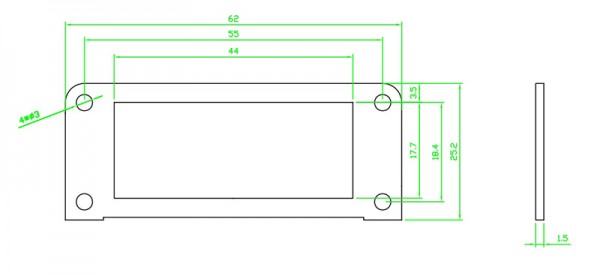
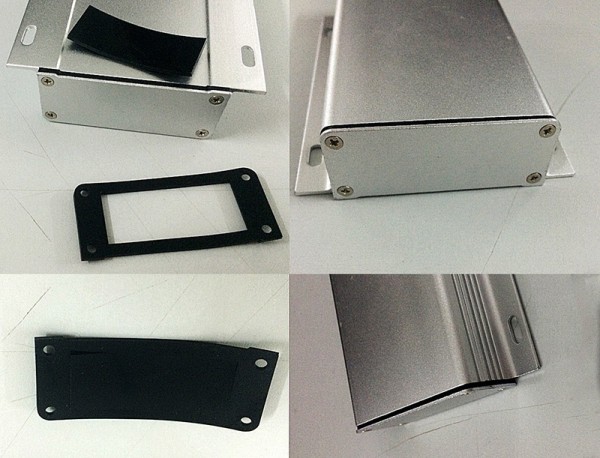
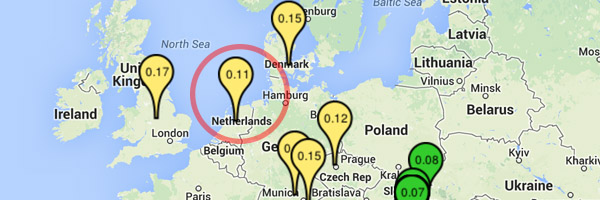 A new unit went online, in a location close to
A new unit went online, in a location close to 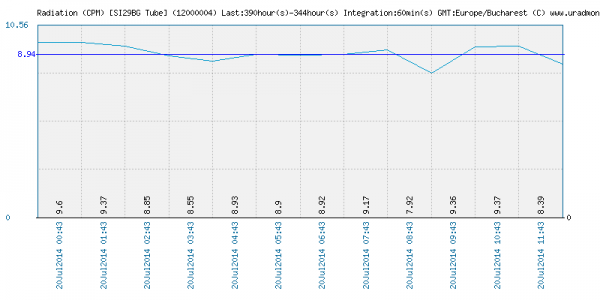
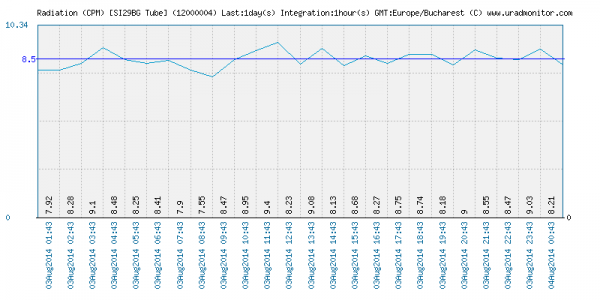
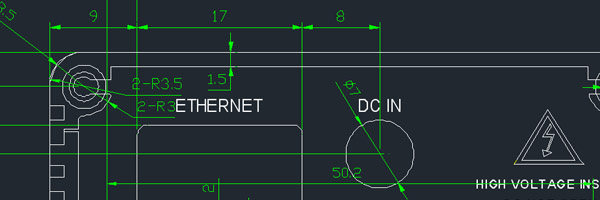
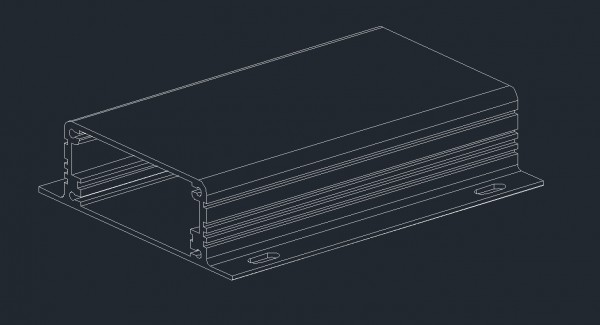
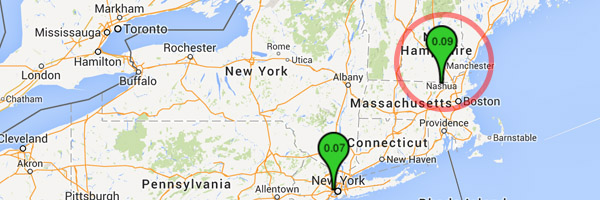
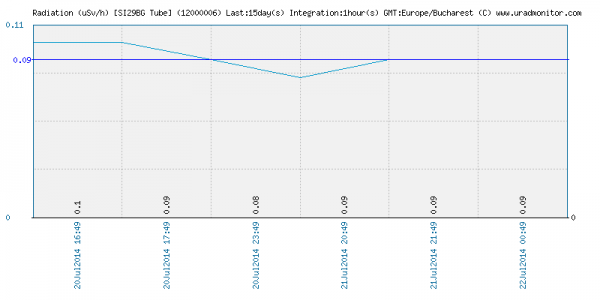
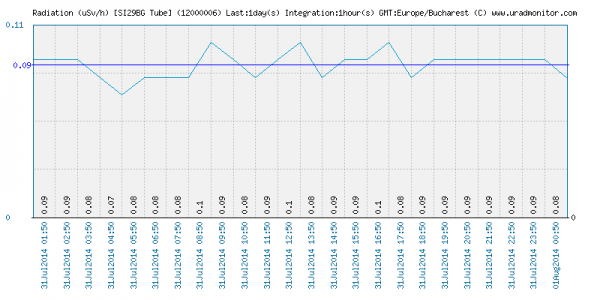
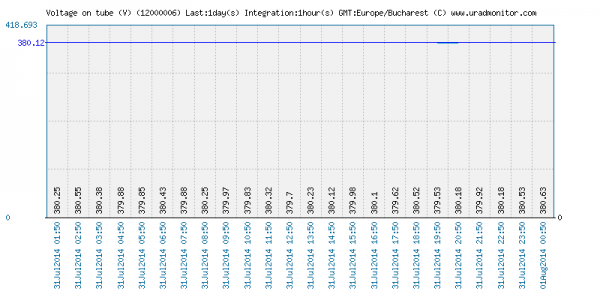
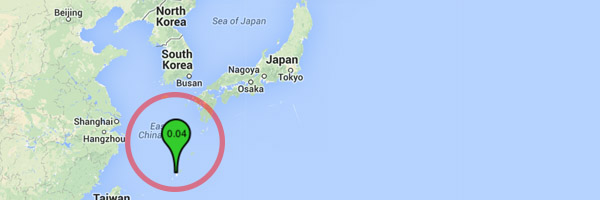
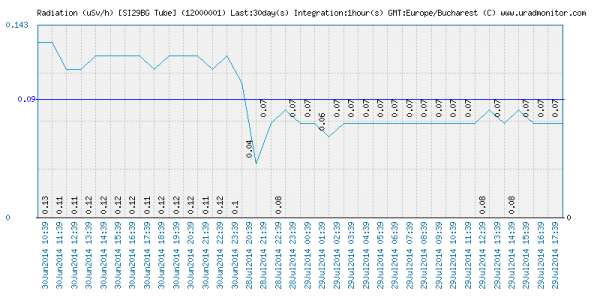
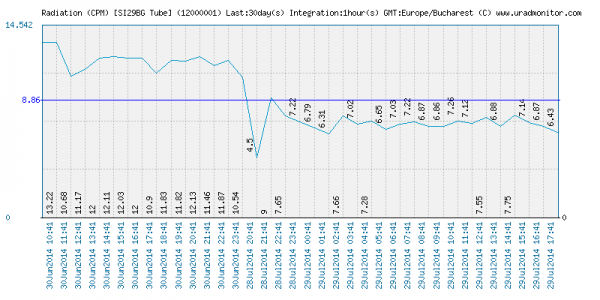
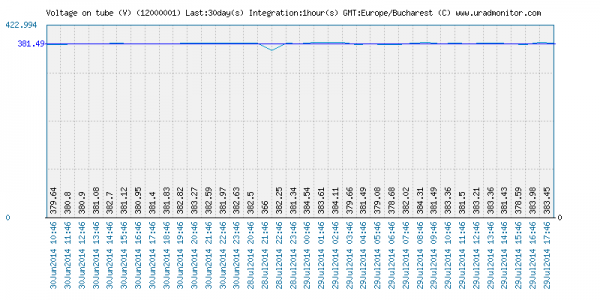
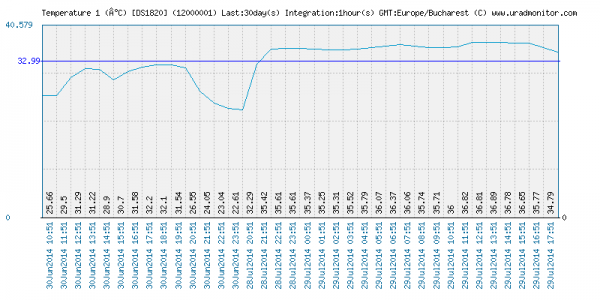
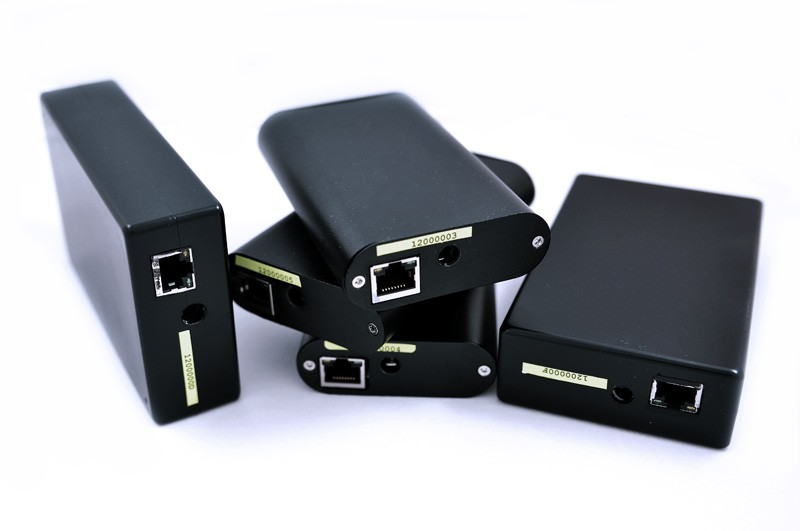
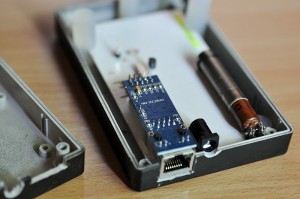

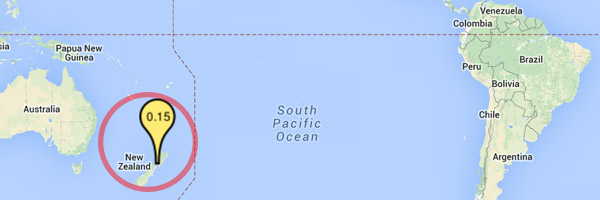
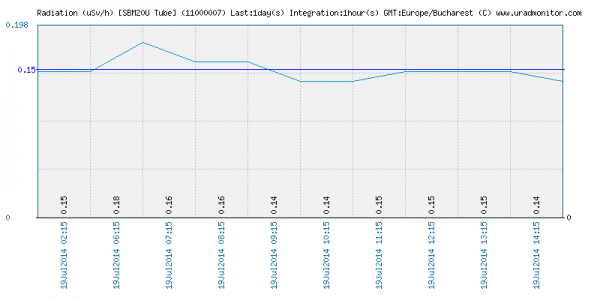
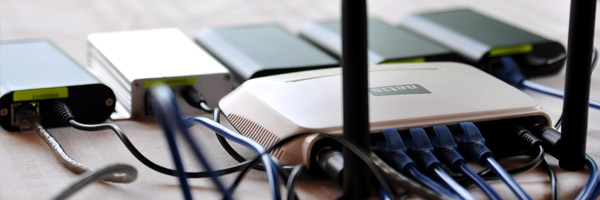 Due to popular demand, but also because wireless is better than installing wires, especially for some remote locations (and that’s where we usually need uRADMonitor installed), here’s a quick guide on connecting the uRADMonitor model A to the wireless network. Yes, uRADMonitor can be connected wirelessly to your home WLAN with the method presented in this guide.
Due to popular demand, but also because wireless is better than installing wires, especially for some remote locations (and that’s where we usually need uRADMonitor installed), here’s a quick guide on connecting the uRADMonitor model A to the wireless network. Yes, uRADMonitor can be connected wirelessly to your home WLAN with the method presented in this guide.